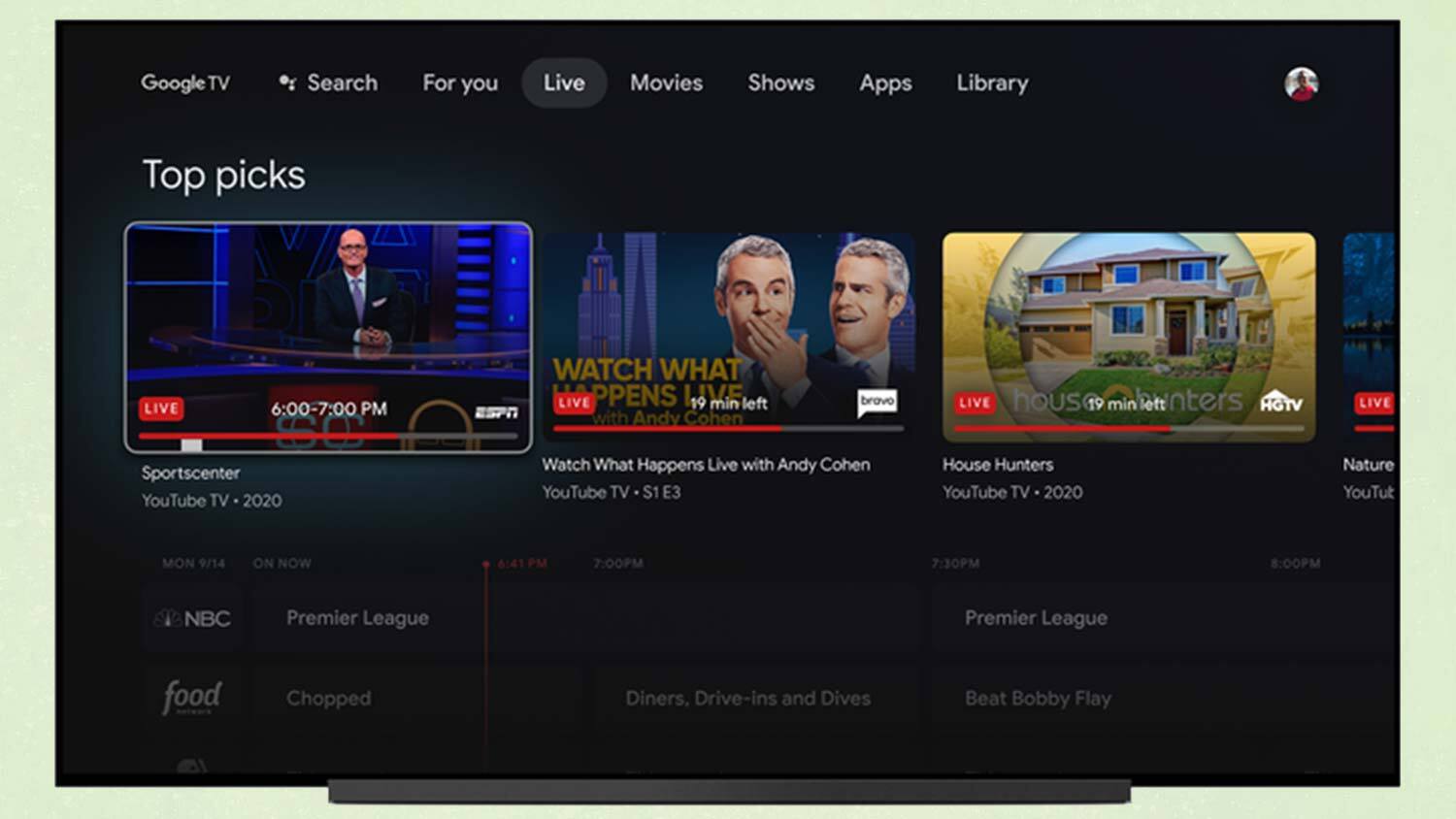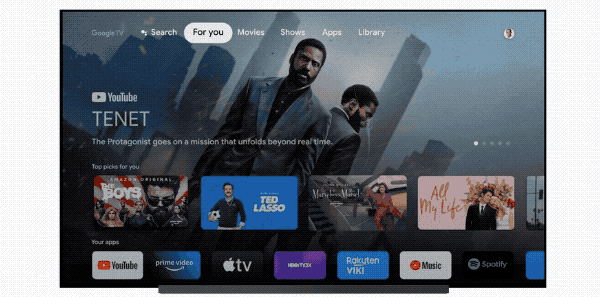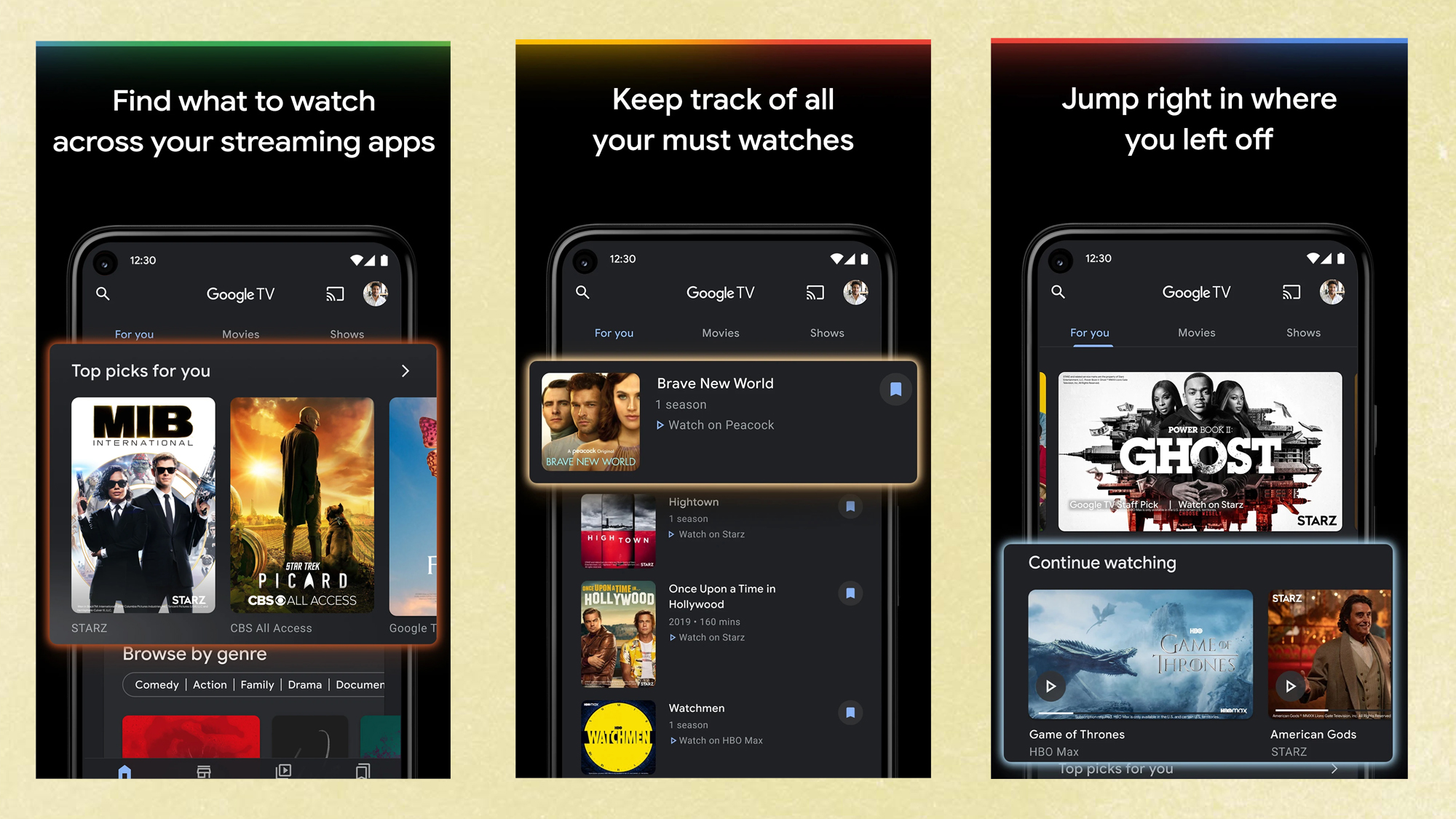Because of the recent introduction of new TCL Google TV models, in addition to the most current Google Chromecast, there’s no doubt that Google TV is here to stay in a major manner. It is more than simply a new moniker for the Google TV platform, which serves as the successor to Android TV. Smart TV users will find it to be a sleeker, more intuitive, and more powerful operating system, bringing additional capabilities to their televisions and putting smart TVs firmly at the heart of the Google ecosystem.
With both Google TV models and Android TV devices hitting the market this year, it’s worth wondering what the difference is between the two platforms. Let’s have a look at some of the new features and capabilities that Google TV brings with it in more detail.
What exactly is Google TV?
Google TV, which began with the Chromecast and will be replaced by Google TV in 2020, has emerged as the next television operating system from Google and has since appeared on smart TVs and other Android streaming devices. By 2022, we anticipate that all new Google-based devices will use Google TV rather than Android TV as their default media player.
However, referring to Google TV as the “alternative” for Android TV is a little misleading. Because the underlying software is still Android, Google TV is more of a rebranding than anything else. In fact, it would be fair to state that Google TV has replaced Android TV as the preferred moniker.
That also means that a large portion of the basic functionality you were used to with Android TV is still accessible on Google TV devices today. There is still a large variety of applications accessible via the Google Play Store that can be used with Google TV devices. And the built-in Google Chromecast, which makes it very easy to stream video from smartphones, tablets, and laptops to your smart TV, hasn’t gone away either, making it even easier to share material.
Google TV vs. Android TV: The biggest changes
What has changed since then? Personalized content, customized suggestions, and functionality that goes beyond the TV and living room have all been improved in the Android TV experience, allowing you to utilize your smart TV as a central point for your whole home’s collection of connected devices.
1.A new graphical user interface

The differences between Android TV and Google TV are immediately apparent the minute you switch on a smart TV from Sony or TCL that is running the more recent Google TV software.
The UI, beginning with the home screen, has seen the most significant overhaul. Instead of providing an experience that is centered on applications — such as the previous Android TV interface, which included a long list of apps and content recommendations — the new Google TV interface places emphasis on content.
A huge picture on the home screen displays emphasized suggestions, which is cycled between films and television programs with large, gorgeous proportional images in the background. In addition to your personal tastes, these suggestions are derived from the streaming services you use, the programs that are now available on Netflix, and some predictive magic from Google.
While the older Android interface featured a scrolling menu with row after row of apps and content recommendations tailored to each individual application, the new Google TV interface is much cleaner and makes it easier to find something to watch without having to go through each individual application.
Some of these distinctions, on the other hand, may not last for very long. Android TVs are receiving upgrades that make them seem and operate a bit more like Google TV in terms of design and functionality. These changes may not be implemented all at once, and the timeframe may vary depending on the manufacturer and even the model. Android TV continues to evolve, with GoogleTV being the next big step in its development. Regardless,
2.Live television is available.

The most significant functional improvements introduced by Google TV include an increased focus on live television content, with an entire tab devoted to living television. A big on-screen channel guide shows you live material that is now playing, as opposed to on-demand streaming choices that may be watched at any time. The content is sourced from live content providers such as YouTube TV and Sling TV.
With hundreds of live channels available on both YouTube TV and Sling TV — two of the finest cable TV alternatives — this list is an excellent tool for skimming through the live sports, news, programs, and movies that are now being “broadcast.”
With the introduction of live television into the modern connected television setting, it’s a good approach to draw attention to YouTube TV’s cable-like services while simultaneously demonstrating an improvement in browsing and interacting with content. Over time, it is possible that more live television services will be added to this channel list.
3.Remote control on the go

You may use an Android phone as a remote control for your Google TV by making use of Google’s vast ecosystem of devices and linked applications.
A touchscreen and on-screen keyboards have been included as part of the remote control, making it simpler to navigate about the TV. Entering passwords becomes more fluid than navigating a “keyboard” on the television screen, and entering a complicated movie title may be better than having to repeat a perplexing phrase to the voice search over and over again, as has been shown.
As we’ve seen with other streaming media players such as Roku, Vizio, and others, app-based remotes are nothing new. However, Google TV goes one step further by combining this capability with content browsing and customized watchlists on your phone, all inside the same app. The specifics of those capabilities will be discussed in more detail later, but combining all of this power with a remote control in a device that you have in your pocket at all times helps to break through the boundaries that exist between your smart TV and your smartphone. It represents a shift away from the television as a stand-alone device and toward the television as a component of your broader media watching environment.
4.Google Accounts are available for purchase.
All of the features listed above allow for customization, whether it’s via suggestions, lists of subscription services, or just allowing you to operate the TV with a personal device. Google goes one step further by providing individual user accounts on Google TV, which is currently in beta.
This allows family members to get suggestions that are specifically customized to them, based on their watching patterns and interests. The ability to separate one person’s historical drama recommendations from another’s kung-fu movie recommendations, as well as to enjoy a series or streaming subscription without having to share it with the whole family, is a significant advance over previous options.
5.From your mobile device, create a watchlist.

When you’re not in front of the television, you may use that customization to select material for yourself. Using watchlists, you can mark movies, television programs, and events that you want to see and add them to your customized watch list from any device that is connected to your Google account. Whatever device you use to add a program to your watch list (whether it’s your phone, your laptop, or the smart speaker in the other room), all of these Google-connected devices are capable of doing so.
See a show mentioned on Twitter that you want to see? Right there on your phone, you may add it to your watchlist.
On Slack, have you seen any virtual water cooler discussion about a movie you’ve never seen before? From your laptop or desktop computer, you may add it to your watchlist for later viewing.
While you’re making the bed, did you suddenly recall the name of that movie you’d forgotten about? You may use your Google Home smart speaker to queue it up for you to watch at a later point.
6.Integration of smart home technology
It is important to note that this connection of the smart TV with other devices across the Google ecosystem extends well beyond profiles and watchlists. Google is making use of its extensive portfolio of smart home products to enable you to take advantage of the “smart” features that smart TVs are supposed to provide.
It is possible to see live video feeds from the finest video doorbells and home security cameras directly on your television set. You can use your smartphone to control the smart lights in your living room, creating the perfect atmosphere for movie night without ever getting off the sofa. You may also participate in a Google Duo video chat by connecting a camera to your smart TV, which will provide you with a larger, better screen for those virtual get-togethers that have grown more popular in recent years.
And, since Google Assistant is integrated into all of these devices and is incorporated into the television – complete with hands-free voice control – you can access any of these capabilities just by saying “OK Google” to Google.
7.Parental controls and child profiles are two features that are becoming more popular.

It is possible to create child profiles, complete with content filters and parental controls, in addition to utilizing user profiles to provide customized content recommendations.
These child profiles include suggestions for age-appropriate material, a kid-friendly home menu, and filters for applications, movies, and television programs that can be customized by the user’s parents. Moms and Dads may ban particular applications and certain titles, all from the convenience of their phone – no more wresting the remote away from a naughty kid before you can make a difference. It also allows you to set viewing time limits for certain periods of time and has the ability to turn everything off at specified bedtimes.
8.”Basic TV” is the default setting.
Basic TV mode is an extra function that has been introduced to the latest Google TV devices. It essentially turns off all of the smart features and connections that are required for normal smart TV usage, while still allowing for the viewing of live television via antenna or cable, as well as the use of external devices like media players and gaming consoles.
By turning off the internet connection, you may alleviate some of the privacy issues posed by monitoring for content suggestions and advertisements. The basic model also disables Google Assistant on the TV, which is a useful feature.
It’s sort of nice to have the choice to turn off all of that in a world where almost all TVs are smart TVs, but it’s also kind of annoying.
9.The Google TV application

It is the Google TV app, which has taken over for the previous Google Play Movies & TV app, that is responsible for tying the whole experience together.
While the Google TV app is confusingly called simply Google TV, the same name as the smart TV software, it becomes less confusing when you learn that the app and program are intended to be used in conjunction with one another. Instead of being a supplemental feature, the new Google TV app is an integral part of the Google TV experience.
In addition to browsing material from all of your favorite services, adding programs to your watchlist, purchasing or renting content, and controlling the TV via the integrated remote via Wi-Fi or Bluetooth, the app also has a variety of other features.
For the time being, the Google TV app is only accessible on Android devices, but we anticipate it to be made available on Apple devices in the near future too. There has been no indication of when an iOS version of the Google TV app would be released.
Is it still worthwhile to get an Android TV?
In the meanwhile, although Google is transitioning all of its smart TVs and streaming devices to Google TV, there will be a transitional period of around a year during which existing Android TV models will continue to be offered alongside the latest Google TV models. So, which one should you choose?
If we had to choose, Google TV would be the best option since it combines everything that made Android TV so amazing with much more functionality, better content discovery, and many other usability enhancements.
That being said, Android TVs retain all of the key capabilities that Google TV provides, including a large app selection, built-in Chromecast, and Google Assistant, as well as many of the same smart home features that Google TV provides (just with some extra steps to set them up). The low pricing of Android TVs will make them a particularly appealing option for bargain hunters when manufacturers and retailers reduce prices to clear out outdated inventory.
Conclusion: In any scenario, it seems that you will be receiving one of the most enjoyable smart TV experiences available. Google TV is the clear winner when it comes to the newest and best, but you’re safe purchasing either one.


![how to get more views and followers on Snapchat:[Powerful Tactics]](https://luxuryparcel.com/wp-content/uploads/2021/10/how-to-get-more-views-and-followers-on-Snapchat-218x150.png)





![how to get more views and followers on Snapchat:[Powerful Tactics]](https://luxuryparcel.com/wp-content/uploads/2021/10/how-to-get-more-views-and-followers-on-Snapchat-100x70.png)



